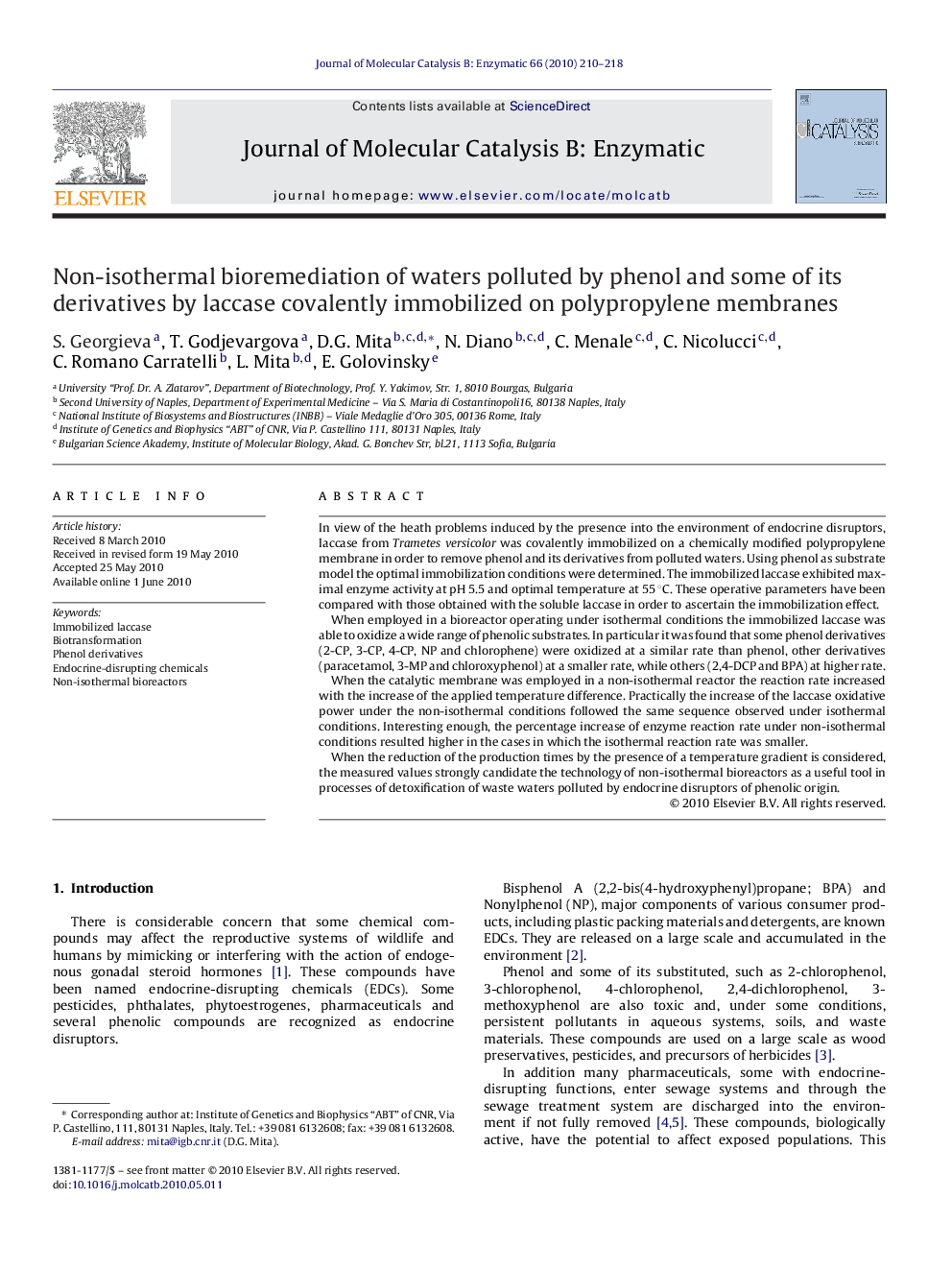| Article ID | Journal | Published Year | Pages | File Type |
|---|---|---|---|---|
| 70424 | Journal of Molecular Catalysis B: Enzymatic | 2010 | 9 Pages |
In view of the heath problems induced by the presence into the environment of endocrine disruptors, laccase from Trametes versicolor was covalently immobilized on a chemically modified polypropylene membrane in order to remove phenol and its derivatives from polluted waters. Using phenol as substrate model the optimal immobilization conditions were determined. The immobilized laccase exhibited maximal enzyme activity at pH 5.5 and optimal temperature at 55 °C. These operative parameters have been compared with those obtained with the soluble laccase in order to ascertain the immobilization effect.When employed in a bioreactor operating under isothermal conditions the immobilized laccase was able to oxidize a wide range of phenolic substrates. In particular it was found that some phenol derivatives (2-CP, 3-CP, 4-CP, NP and chlorophene) were oxidized at a similar rate than phenol, other derivatives (paracetamol, 3-MP and chloroxyphenol) at a smaller rate, while others (2,4-DCP and BPA) at higher rate.When the catalytic membrane was employed in a non-isothermal reactor the reaction rate increased with the increase of the applied temperature difference. Practically the increase of the laccase oxidative power under the non-isothermal conditions followed the same sequence observed under isothermal conditions. Interesting enough, the percentage increase of enzyme reaction rate under non-isothermal conditions resulted higher in the cases in which the isothermal reaction rate was smaller.When the reduction of the production times by the presence of a temperature gradient is considered, the measured values strongly candidate the technology of non-isothermal bioreactors as a useful tool in processes of detoxification of waste waters polluted by endocrine disruptors of phenolic origin.
